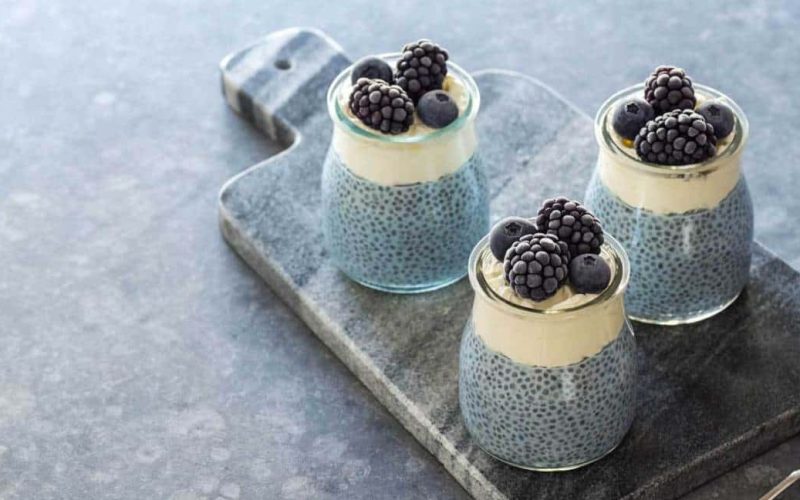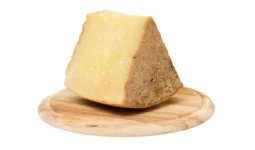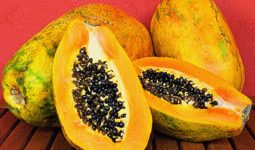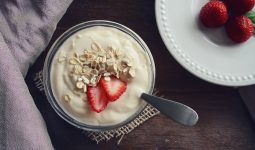Ketosis is the process where the body switches from carbs to fat as its primary source of energy.
The ketogenic diet has become a go-to diet for those seeking to shed excess weight. This is because research has shown that switching to this low-carb high-fat diet promotes loss of fat, enhances cognitive function in elderly adults, and lowers blood glucose levels, which is suitable for patients with type 2 diabetes.
This article contains which foods to eat and avoid when following a keto diet and provide a keto-friendly shopping list, a 7-day menu, and healthy ketogenic snacks to help your startup.
Keto diet basics
Before we go into the ketogenic diet plan properly here a few things, you should know.
The ketosis diet depends on a high-fat- moderate protein- low carb routine.
75% of your total calorie intake should be gotten from foods containing fat while protein foods provide 25% and carbs 5%.
This reduction in carbs forces your body to go into ketosis – a process where your body switches to fat as its primary source of energy instead of glucose.
Though people tend to avoid fat due to its high-calorie content, studies reveal that the ketosis diet can lead to significant weight loss than a low-fat diet.
Also, the ketogenic diet reduces hunger and promotes satiety, which is a plus when trying to lose weight.
Ketosis diet plan
The ketosis diet includes foods that contain fat and also eliminate foods high in carbs so your body can achieve and maintain the state of ketosis.
This is a crucial part of the process as you can get easily kicked out of ketosis when you don’t pay attention to the food you eat. For instance, consuming something like eggplants without moderation can quickly revert your body to burning carbs instead of fats.
So what are the foods that can be included in your diet plan?
Oils and fats
Frequently
- Avocado oils
- coconut oil
- Olive oil
- Heavy cream
- Butter
Occasionally (these foods should be consumed minimally especially when they are gotten from packaged foods)
- Corn oil
- Sunflower oil
- Safflower oil
Never
- Artificial trans fat
- Margarine
Protein
Frequently (since ketosis diet and use it in a small number of proteins these foods should be taken in moderation)
- Fish
- Grass-fed beef
- Dark meat chicken
Occasionally
- Low-fat proteins like shrimp and skinless chicken breasts. These are an excellent addition to your diet plan, but some parts are best consumed with a sauce on top instead of eating plain.
Never
- Chicken or fish nuggets
- Meat that was marinated in sugar sauce
- Cold cuts with added sugar ( always read the label! )
Fruits and vegetables
Frequently
- Asparagus
- Avocado
- Celery
- Leafy greens like arugula and spinach
Occasionally ( these are still excellent choices, but you also need to check their carbs content)
- Eggplant
- Spaghetti squash
- Leeks
- Berries (blueberries, blackberries, raspberries)
Never
- Raisins
- Corn
- Potatoes
- Citrus
- Grapes
- Pineapple
- Banana
- Pumpkin
Nuts and seeds
Frequently
- Almonds
- Chia seeds and flaxseed
- Walnuts
Occasionally
- Cashews
- Pistachios
- Unsweetened nut butter ( peanut or almond butter)
Never
- Chocolate covered nuts
- Seed butter and sweetened nut
- Trail mixes with dried fruits
Dairy products
Frequently
- Feta cheese
- Blue cheese
- Cheddar cheese
Occasionally
- Full fat ricotta cheese
- Full fat plain Greek yoghurt
- Full fat cottage cheese
Never
- Ice cream
- Sweetened nonfat yoghurt
- Milk
Sweeteners
Occasionally (sweeteners should be taken in moderation)
- Erythritol
- Stevia
- Xylitol
Never
- Maple syrup
- Honey
- Brown and white sugars
- Agave
Sauces and condiments
Frequently
- Mayonnaise ( make sure there’s no added sugar)
- Lemon butter
- Guacamole
Occasionally
- Tomato sauce ( ensure there is no added sugar)
- Raw garlic
- Balsamic vinegar
Never
- Ketchup
- Honey mustard
- Barbecue sauce
Drinks
Frequently
- Water
- Plain tea
- Bone broth
- Almond milk
Occasionally
- Zero calorie drink
- Unsweetened carbonated water ( consume moderately as bubbles may make you bloated)
- Black coffee ( watch caffeine intake)
Never
- Lemonade
- Fruit juice
- Soda
Spices and herbs
Frequently (all spices and herbs are excellent additions to a keto diet however they should be used in moderate amounts)
- Salt
- Paprika, thyme, oregano, and cayenne
- Peppa
Occasionally ( there’s also fit in a ketogenic diet but contains some carbs)
- Onion powder
- Garlic powder
- Ground ginger
A handy ketogenic shopping list
A well-thought-out shopping list can always come in handy when shopping for keto foods and also help you overcome the temptations of purchasing unhealthy products.
Your list should contain a lot of healthy fats proteins and a mixture of both frozen and fresh produce. This will ensure that you have a supply of keto-friendly fruits and veggies to add to recipes.
Here’s a simple shopping list for keto-friendly foods that can be used as a guide when perusing the grocery aisles.
- Fish. Fatty fish like sardines salmon Herring and mackerel are the best.
- Meat and Poultry. Chicken, pork, turkey, beef ( whenever possible opt for organic and pasture-raised products)
- Eggs. Go for pastured or omega-3 enriched eggs whenever possible.
- Shellfish. Oysters, scallops, and shrimps
- Oils. Avocado and coconut oils
- Full-fat dairy. Butter heavy cream unsweetened yogurt and sour cream
- Cheese. Goat, Cheddar, cream, Brie cheese
- Avocado. Purchase a mixture of unripe and ripe avocado so that your supply will last.
- Fresh or frozen berries. Blueberries, raspberries, blackberries
- Nut butter. Peanut butter, almond butter
- Seeds. Chia seeds, pumpkin seeds, sunflower seeds
- Nuts. Almonds, pistachios, macadamia, nuts, pecans, tigernuts
- Condiments. Pepper, sea salt, garlic, vinegar, herbs, salsa, spices, and olives
- Fresh or frozen low-carb veggies. Broccoli pepper, tomatoes mushrooms onions cauliflower.
One advantage of Keeping a shopping list is that it helps you decide what foods will fit into your keto meal plan.
Also, it will help you plan your meals ahead of time so you can enjoy a whole week of keto-friendly dishes.
A 7-day keto meal diet plan
Monday
| Breakfast | Scrambled eggs with pastured butter |
| Lunch | Grilled salmon served with a spinach salad |
| Dinner | Roasted chicken served with sauteed mushrooms and a side of asparagus |
Tuesday
| Breakfast | Keto coconut porridge |
| Lunch | Roast beef pasta, pesto, arugula brie, and olive plate |
| Dinner | Zucchini noodles + meatballs + parmesan cheese |
Wednesday
| Breakfast | Bacon and eggs cooked in bacon fat |
| Lunch | Tuna salad with tomato and celery atop a bed of Greens |
| Dinner | Roast chicken with sauteed broccoli and cream sauce |
Thursday
| Breakfast | Keto granola served with full-fat yoghurt |
| Lunch | Pepperoni and cream cheese rolls with almonds and celery slices |
| Dinner | Grilled shrimp served with a lemon butter sauce + asparagus |
Friday
| Breakfast | Mushroom omelette |
| Lunch | Two boiled eggs served with string cheese cucumber and avocado slices |
| Dinner | Beef in cream sauce with zucchini sauteed in pastured butter |
Saturday
| Breakfast | Walnut and coconut atop coconut milk chia pudding |
| Lunch | Sashimi takeout with miso soup |
| Dinner | Pork chops with sauteed green beans |
Sunday
| Breakfast | Salsa and cheese and veggie omelette |
| Lunch | Grass-fed burger with lettuce bun served with avocado and a side salad |
| Dinner | Cauliflower rice with baked tofu peppers and broccoli served with a homemade peanut sauce |
Keto-friendly snack options
While following a ketogenic diet, you can moderate hunger and stay on track during the day by snacking in between meals.
And you may only need to snack once or twice a day since the ketogenic diet makes you feel Fuller.
Here are some healthy ketogenic snack options to add to your weekly meal plan.
- Kale chips
- Coconut chips
- Turkey jerky
- Macadamia nuts
- Tiger nuts
- Cucumber and mayo
- Strawberries
- Sunflower cheese
- Blueberries
- Meat-based bar ( pork or Turkey)
- Walnuts
- Hard-boiled eggs
- Smoothie made with almond butter, greens, almond milk, and protein powder
- Parmesan crisp
- Cheese roll-ups
The snacks should be taken in moderation as eating too much of them throughout the day may contribute to weight gain.
It’s also important to consume the appropriate number of calories based on your age, gender, activity level, and weight-loss goal.
Bottom line
The ketogenic diet holds a lot of health benefits, especially for people wishing to lose a few pounds as well as people with type 2 diabetes.
Thanks to the increasing popularity of the ketosis diet, it’s not easier to get a wide variety of exciting and healthy keto meal plans online.
However, while some people may reduce a few caps from their diet to achieve ketosis, others may need to subtract more.
Book an appointment with a professional dietitian to assist you in planning a keto diet that aligns with your weight loss goals.








